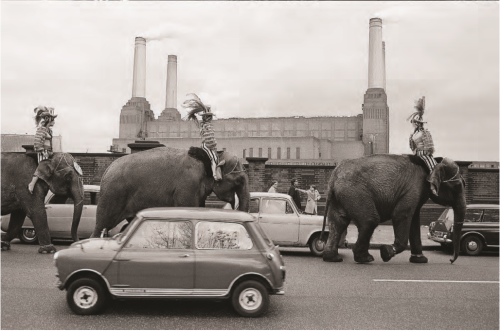When I interviewed Rob Tincknell, chief executive of the Battersea Power Station development, for my book Up In Smoke, he went to great lengths to explain why the plan would be a success, not just as a business but as a new piece of city.
Well, he actually used the words “urban village”, but let’s try not to blame him for that.

Tincknell enthused about how carefully they had worked out the exact mix of residential-commercial-leisure space in a way that would create the perfect “place” – a real destination that people wanted to visit. This was the social science of “placemaking” and the developer had published numerous reports and beautiful but boring books to explain their position.
He proudly told me the precise numbers: “57% residential. Of the remaining 43% that’s about 3.4m sq ft, 1.2m retail and restaurants, 1.7m sq ft of offices and the balance in hotels, leisure and community space.”
These numbers, he insisted, were sacrosanct – they were the recipe that made the cake rise.
“It’s an appropriate density for the centre of the city,” he said when I questioned the scale of the residential aspect. “This level of density has been proved all round the world as a density that works. It creates a critical mass so the shops function, the public transport works, there’s a buzz and that’s what people come for. You create this mix of uses, this cocktail that you really believe in, you have to stick with it, you can’t fiddle with the ingredients.”
Guess what?
That’s right, the ingredients are now being fiddled with. According to an interview with Ticknell in the Financial Times, the bottom has fallen out of the luxury flat market, causing problems for the power station model. But riding to the rescue are Apple, whose decision to move into the power station’s vast office space in 2021 has undoubtedly been a gigantic coup for the developers. Now, with Apple proving such an attractive hook, Tincknell is talking about turning over more of the residential aspect to offices. He told the FT that at least one planned building in the third phase of the scheme, designed by Frank Gehry and Foster + Partners, was under consideration for a change of use.
“I could easily see us adding another million square feet [of offices],” Tincknell says. “The great thing about a long-term scheme like this is we can adjust with the markets. If there’s no residential market and a very strong office market then we will build offices.”
It looks as if that perfect cocktail is being shaken not stirred.
For Up In Smoke, Tincknell promised me “that we are genuinely committed to creating a brilliant community. We feel very passionate. It will only make the place better. We have a responsibility to London. We are doing things way beyond the remit of the site so it fits in with London and genuinely improve the quality of life. If we succeed in that goal the value of the commercial and residential assets will rise and it will be a great place to live and visit. You can’t just develop it and run away, it has to work.”
On that latter promise, we’ll just have to wait and see.

Pingback: Peter Watts, Up In Smoke and how to ‘write London’ – Dave Hill ON LONDON
Pingback: Reversing the ferret: affordable housing at Battersea Power Station | The Great Wen